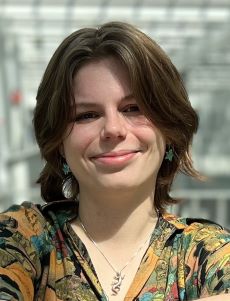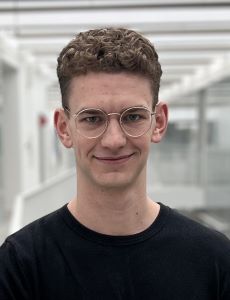
From Bachelor thesis to publication
What drives two students to spend their summer break on writing a paper? And do they have any good advice to other students who consider writing a paper?
Ida Juliane Bundgaard and Christian Nicolaisen Hansen used the summer break in 2023 for writing up a paper and now, the paper is pushed with the title ‘Quantum-informed plasmonics for strong coupling: the role of electron spill-out’ in Journal of the Optical Society of America B.
It all started with writing a bachelor thesis at SDU POLIMA. Together with Associate Professor Christos Tserkezis and PhD student Elli Stamatopoulou, Ida Juliane Bundgaard and Christian Nicolaisen Hansen decided on the project idea. They were able to start working on the bachelor project already in January a bit earlier than normally which allowed time to have soft start on the project and really understanding the problem before starting on the project.
Ida: ‘From the beginning, we met weekly, and it made it much more enjoyable to write the bachelor thesis, it made me feel much more safe. I knew that there was space to say, I don't understand why we're doing this. We didn’t have to constantly reach out. We never felt like a burden.’
They decided on a process starting with an investigation phase followed by a writing phase. The very structured process combined with the weekly meeting made was easy to navigate in and Christian: ‘At all times, it was relatively easy to understand where in the process we were’.
When did you decide to turn the thesis in to a paper?
Christian: ‘it was sort of hinted at during the writing of the thesis, that what we're working on could be publishable.’
Ida: 'After the defense of the thesis, Christos asked us if we wanted to write the publication. We agreed and started working after a month of holiday.'
Then the work started with condensing a bachelor thesis into a paper.
Ida: ‘We started by writing the introduction. We had never written an introduction to a paper before. We tried our best. But I don't think almost anything of the original introduction survived.'
Christian: 'I think that was the most difficult part, trying to guess from other papers what should be in this introduction and what shouldn't?'
One of the challenges that Ida and Christian encountered was, how difficult it is to communicate the results to a broader audience. When writing a thesis both the students and the supervisor are aware of the context and the problem, but as Ida explains ‘we've been looking so much at the data, but then when you put it into words and someone else has to read it, they might don't understand what you're saying.’
Was there anything in the process you were surprised about?
Ida: ’I didn't really know how the whole reviewing process worked. We got the responses from the reviewers and then we were supposed to correct things, but also write a response letter and explain ourself to these reviewers.'
Knowing what you know now, would you do it again?
Ida: ’I think that this first-time publishing was kind of a little bit with training wheels on it. And we had two very experienced persons [Associate Professor Christos Tserkezis and PhD student Elli Stamatopoulou] to help and they were also very dedicated to making it work.'
Do you have any good advises for other students who consider making a paper based on their bachelor thesis?
Ida: 'I think what has made this a pleasurable experience is that we had a good supervisor. If not, I think it could have been very scary and very exhausting.'
What is your greatest learning from this process?
Christian: 'I think, I've learned to write in a new way that we don't really do other in other contexts in education.'
Ida: 'I have learned something about how academia works, this is a different world than what I'm used to.'
Ida Juliane Bundgaard

Christian Nicolaisen Hansen

Publication
‘Quantum-informed plasmonics for strong coupling: the role of electron spill-out’ in Journal of the Optical Society of America B.